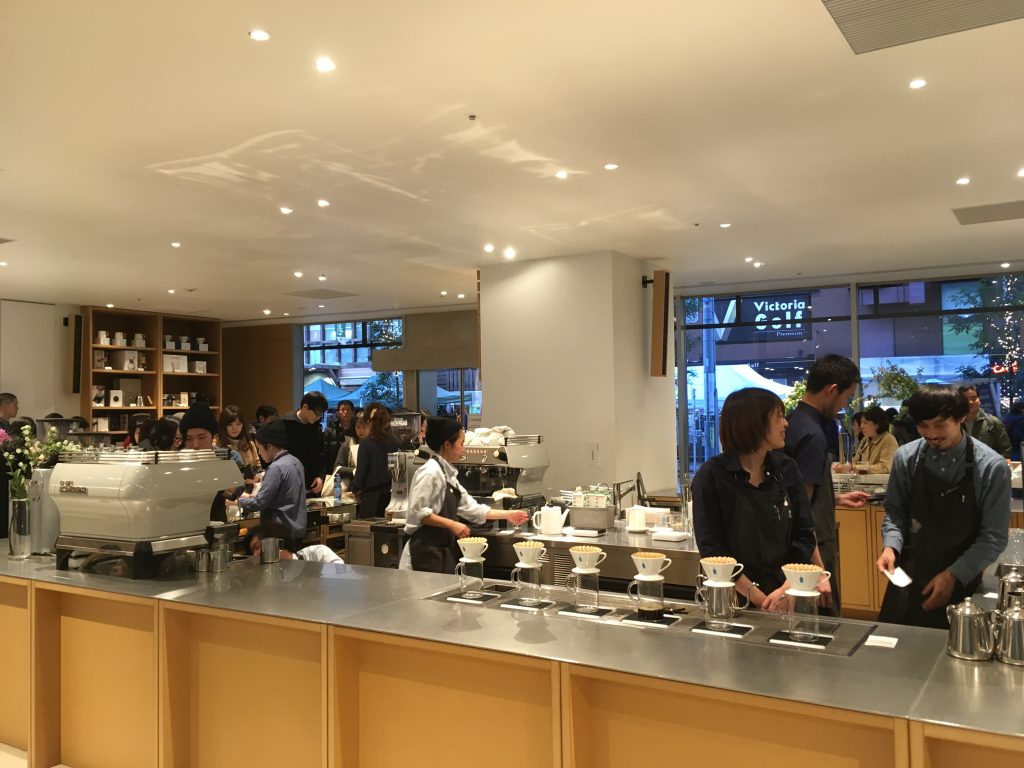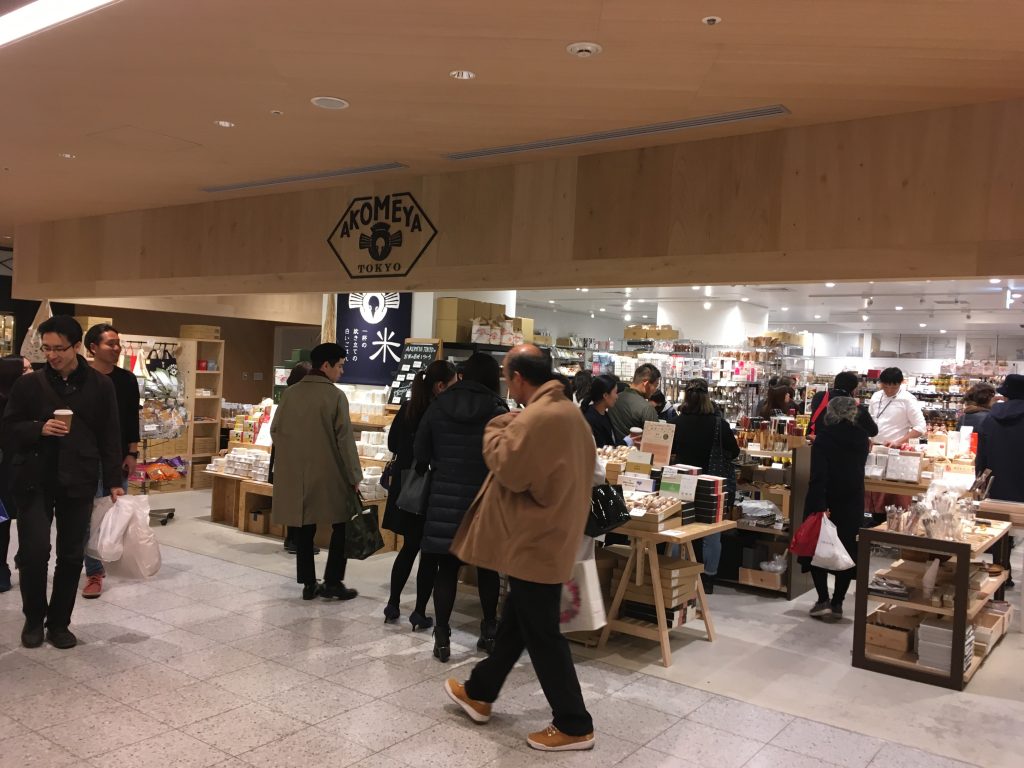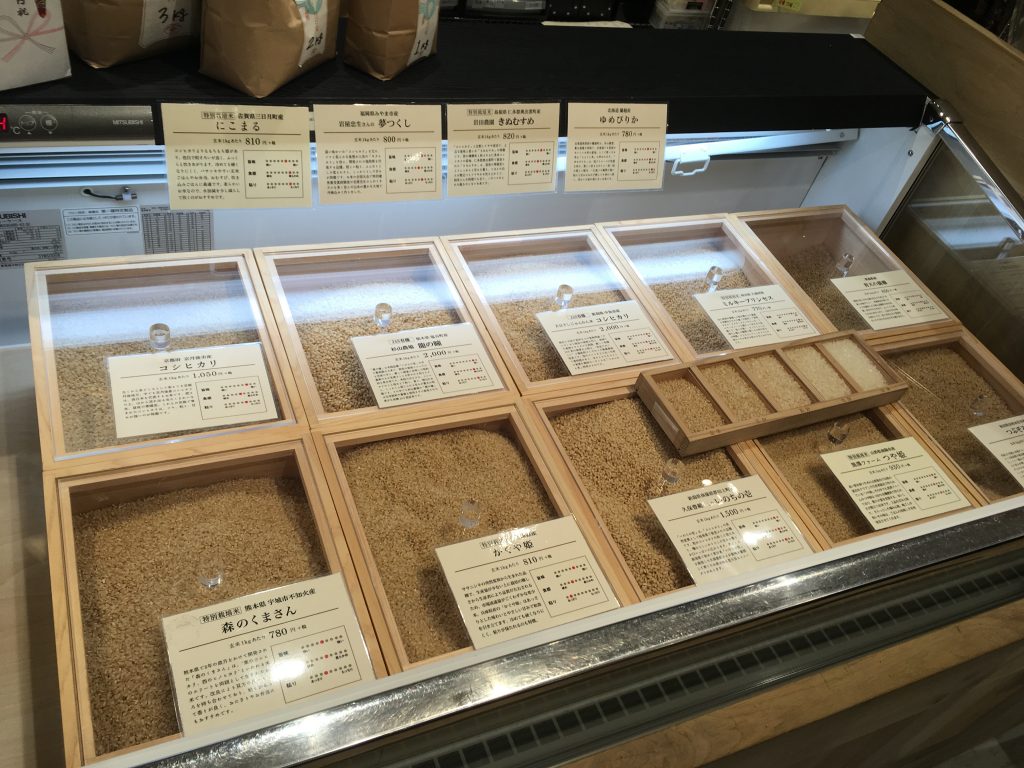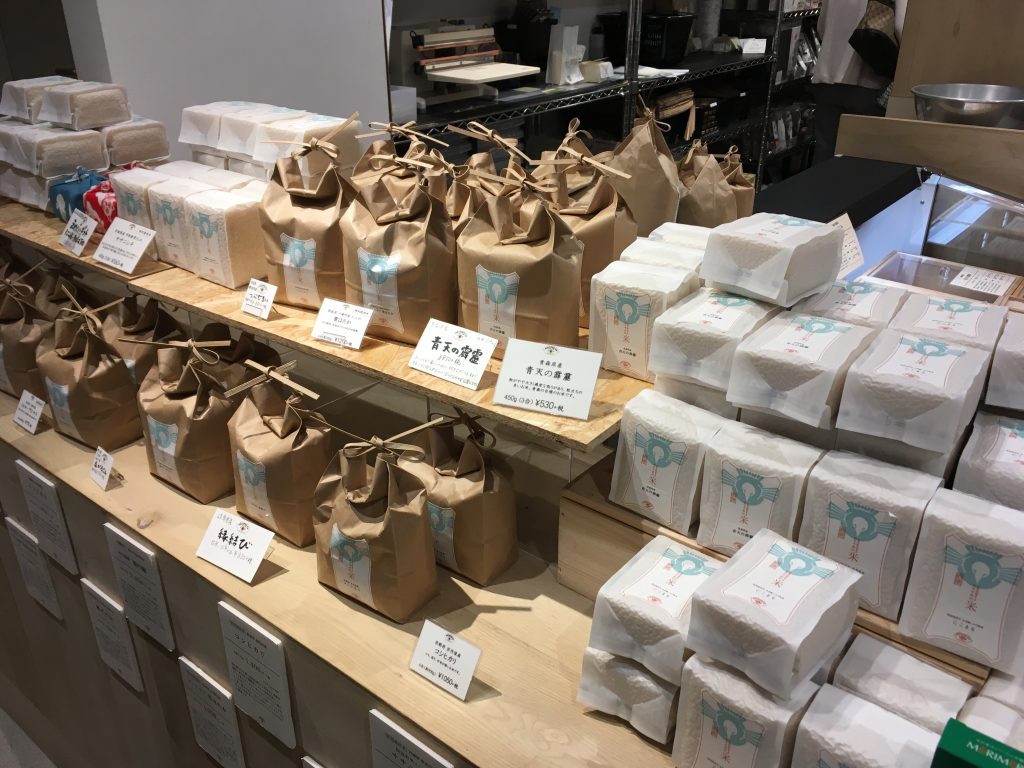Many Asians live on rice rather than bread. Since it used to sell in heavy bags, they did not have options to choose. However, people nowadays decrease the amount of food to consume and increase the diversity of means to enjoy. A wide variety of small-portion “meal kits” become highly popular. Certainly, rice is not exceptional.


When I visited Tokyo, Japan, I found a store called Akomeya in Shinjuku area. This store is located across Blue Bottle and has more customers than it. When I entered this store out of curiosity, I found it sells small packages of numerous types of rice. In Akomeya, customers could make a choice out of many options, which does not usually happen when buying rice.


Although freedom of choice may not be a pillar of Western culture any more, it may still be attractive for Asians.
**
Reference 1
Mochon, D. (2013). Single-Option Aversion. Journal of Consumer Research, 40(3), 555–566.
This article documents single-option aversion, an increase in consumers’ desire to search when faced with a single option. This effect can lead to a product being chosen more often when competing alternatives are included in the choice set, contrary to various rational models of search, as well as to recent research on choice conflict showing that additional options can lead to higher deferral rates. A series of lab studies document this effect, differentiate it from other context effects, and test some of its boundary conditions. The results suggest that single-option aversion is not driven by the information provided by the additional options, that the desire to search is critical for this effect to occur, and that the effects of single- option aversion are not limited to the immediate choice set. These results have both practical and theoretical implications for the understanding of consumer search and choice deferral.

Indeed, in a more recent study with over 7,000 participants from six countries, researchers found that choice deprivation—a feeling of not having enough to choose from—not choice overload is the most common consumer experience in both trivial and highly consequential domains. And choice deprivation isn’t just more common—it’s also more harmful to choice satisfaction than overload.
**
Reference 2
Reutskaja, E., Cheek, N. N., Iyengar, S., & Schwartz, B. (2022). Choice Deprivation, Choice Overload, and Satisfaction with Choices Across Six Nations. Journal of International Marketing, 30(3), 18–34.
Whether consumers have too little, too much, or the ideal amount of choice can have profound consequences. The present research explores patterns of choice deprivation (having less choice than desired) and choice overload (having more choice than desired) across six choice domains in six countries that together provide home to about half the human population (Brazil, China, India, Japan, Russia, and the United States; combined N = 7,436). In most domains in most countries, choice deprivation was the norm—only in the United States was choice overload commonly reported. Deprivation was also more strongly related to decreased satisfaction with choices than was overload, suggesting that choice deprivation can be both more common and more consequential than overload. The present research has implications for “inverted U-shape” theories of consumer choice experiences and underlines the need for more diverse samples, including cross-cultural samples, in research on choice deprivation and overload.


Do you like choosing? According to this post, consumer enjoy freedom of choice while decreasing the amount of food to consume and increasing the diversity of means to enjoy. The author reinforces the argument that people Especially Asians like to choose based on the content of two studies on the importance and influence of options. The first study says, “A product being chosen more often when competing alternatives are included in the choice set.” When faced with single-option, consumers have an increased desire to search. This desire to search can be thought of as a phenomenon of trying to find other alternatives. Through search, people try to avoid situations in which only one option is given. This is defined as ‘single-option overturn’ in research. The second study compares ‘choice dependence’ and ‘choice overload’. In fact, only 14% of people feel ‘choice overload’ and 56% say they have too little choice. In conclusion, it shows that fewer choices than ‘ideal account of choice’ have a fatal effect on selection satisfaction.
The two examples mentioned in the post showed that consumers prefer two or more options rather than a single option, and they want a situation where they can choose from more options. However, even after reading the post and research paper in detail, there was no reason why people preferred to choose or wanted various options to exist. Therefore, I try to find the reason using the contents of ‘JDM: Judgment and decision making’ in behavioral economics. According to JDM, to understand how consumers judge products and how they make purchases, they must break down products and decisions. Breakthrough allows you to think about one attribute by judging it better than competing products, and you can think about one step to purchase more than competing products. The reason was analyzed through two specific steps.
First, Consumers form their own preferences by adding ‘Consumption vocabulary’ (http://designmarketinglab.com/archives/4786). If you show people 4 quilts and ask them what quilts they like, they make choices, but they can’t explain why. However, if you write the properties for quilts, you can explain what your preferences are and why you like them. Through this, I thought it can explain why people hate single-option choices. People decide their preferences by comparing attributes in different options. In the case of single option, there is an absolute lack of consumption vocabulary to form preferences. With more than one option, more consumption vocabularies are added and, accordingly, it becomes easier to form a preference. So, given a single option, I think you’re instinctively trying to find more diverse information (trying to add more consumption vocabularies to form a preference more easily. Second, consumers sometimes make impulsive purchases while only searching for information. The reason why the author thought “Asians love choice” was that rice shops with many options were very popular. Therefore, it was judged that liking a variety of choices could mean making more purchases when you can make a choice. Increasing options has the same meaning as providing a lot of information. According to the theory of decision-making, consumers make impulsive purchases when there is too much information in ‘Search information’ process. The more options people have, the more they lose the ability to make reasonable decisions and make them with a simple mind. For example, if you looked for dozens of houses to move out, you would pick the one that impressed you the most without considering all the information. Therefore, when people entered a store with many options, I thought that it was seen because of people’s preference for making choices because people searched for a lot of information and chose it by emotion.
The following is a summary of why people like various options based on JDM.
1. When judging a product, if there are two or more options than one option, more diverse properties are provided, so preferences are easily formed.
2. The more options you have, the more information you have, so you buy more on impulse. Therefore, people seem to prefer having more options.
Even if the reason I analyzed is difficult to be a clear reason of ‘why people like various options’, it will be useful to know what providers need to think about when providing a variety of options consumers like. I went to a sake shop in Japan. There were a variety of alcoholic beverages, such as basic, hot drinking lines, and sparkling lines. In addition, various sizes were provided for each line. If there was only one sake there, I would have thought about whether to buy it or not. But there were many options, so I thought about what kind of sake to buy. I didn’t go into the store to buy it, but I was attracted to various options and bought it. Suppliers will have to prepare various options for consumers. Because Consumer like making choices.
I was drawn to this post by the simple word “choice” in the title. Before reading it, I thought of myself as someone who struggles and feels stressed when faced with various options for purchasing products. We often jokingly refer to such people as having a “decision-making disorder,” a coined term describing the difficulty in making decisions when presented with multiple choices. If we imagine consumers who are embarrassed because there are so many menus in a cafe and take a long time to order, we will be able to understand the meaning of the world. However, after reading this post and recalling instances where I had to choose between various products, I began to realize that I might actually enjoy and like the process of choosing among numerous options. Although there are some inconsistencies between my experiences and the research findings presented in the post, I contemplated why people might enjoy having choices by adding my personal example.
Recently, I visited Olive Young during June sale. On the last day of the sale, the store was already crowded, and I started scanning the products slowly from the entrance. I selected around 5-6 products in different categories (moisture cream, foundations, body lotions, eyeshadows, etc.) and compared their features. Generally, Olive Young products have detailed descriptions on the packaging, making it easy for customers to make a purchase without needing to look up additional information online. However, since I have very sensitive skin, I always research the suitability of the product for my skin type online, as this detail is often not included on the packaging. In this case, my behavior contradicts the research finding mentioned in the post, which states, “Consumers feel a greater need to search when faced with a single option.” Despite not being faced with a single option, I still research to obtain detailed product information. Nevertheless, if there were only one type of product available, I would have spent even more time researching, compared to a situation where I had multiple options. Of course, this can vary depending on the product or service and consumer characteristics.
Reflecting on my Olive Young shopping experience, I considered why I might enjoy choosing based on the “price” aspect of products. In an era of rising prices, many people prioritize “price” when selecting products. In a single-option scenario, the price is fixed, leaving consumers unable to judge if they’re overpaying or getting a good deal. However, when there are multiple related products on display, consumers can compare prices and make the best choice according to their preferences. Successfully going through the process can make consumers feel like rational shoppers and positively influence their attitude towards comparing products in future purchases. Moreover, the post’s research finding that “choice deprivation is more strongly associated with reduced satisfaction than choice overload” resonated with me. While we can’t always make 100% satisfactory choices, being in a situation with no choices at all can feel like being forced to buy a single product. If that product turns out to be unsatisfactory, finding an alternative becomes difficult, leading to greater dissatisfaction. Therefore, reading this post has changed my previous thinking. I realized that most people, including myself, prefer choice overload to choice deprivation. However, companies offering a wide range of products should also ensure that products are categorized and presented in a way that helps consumers easily understand the related information.